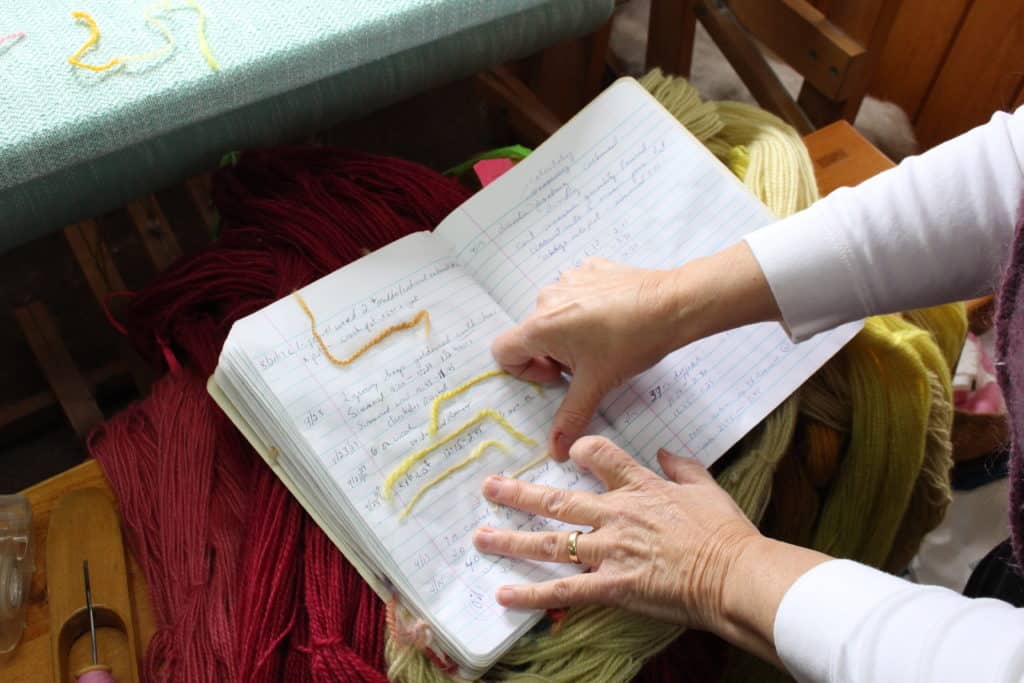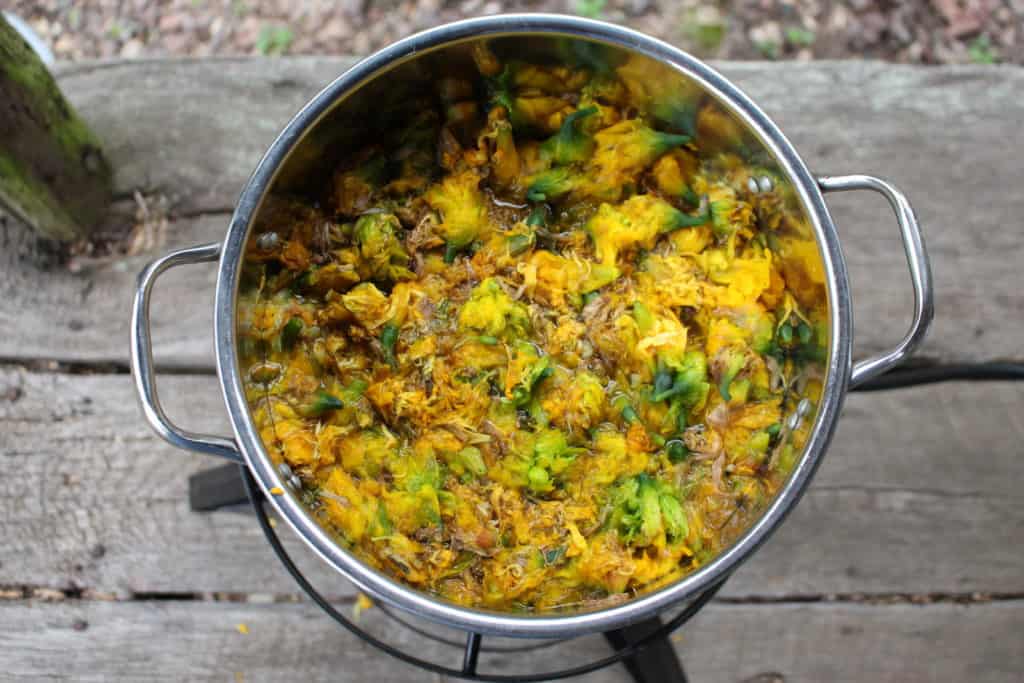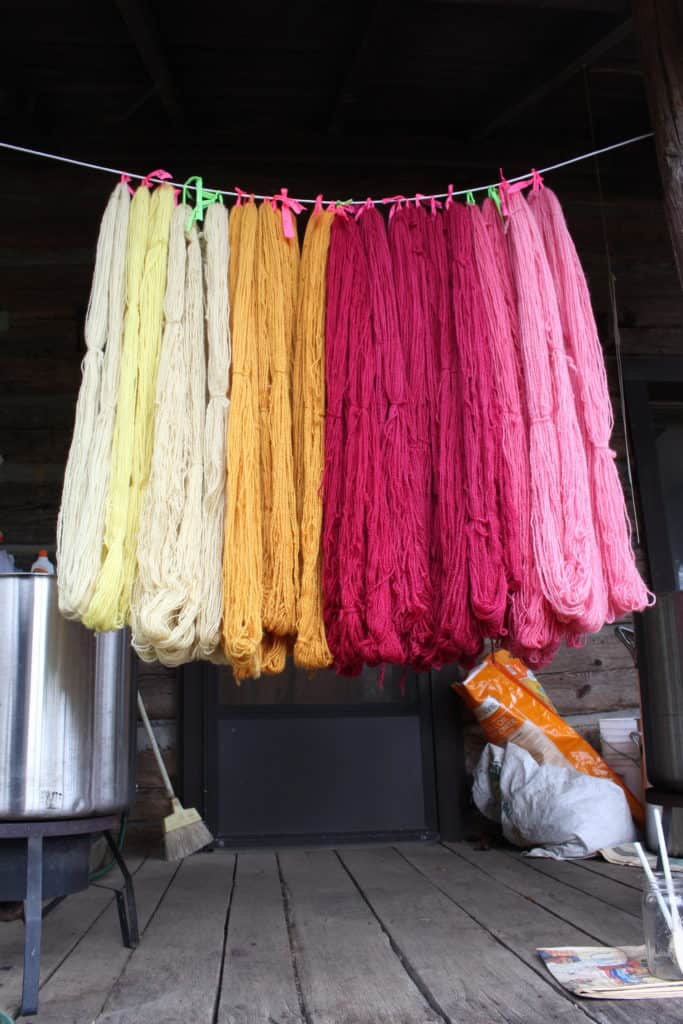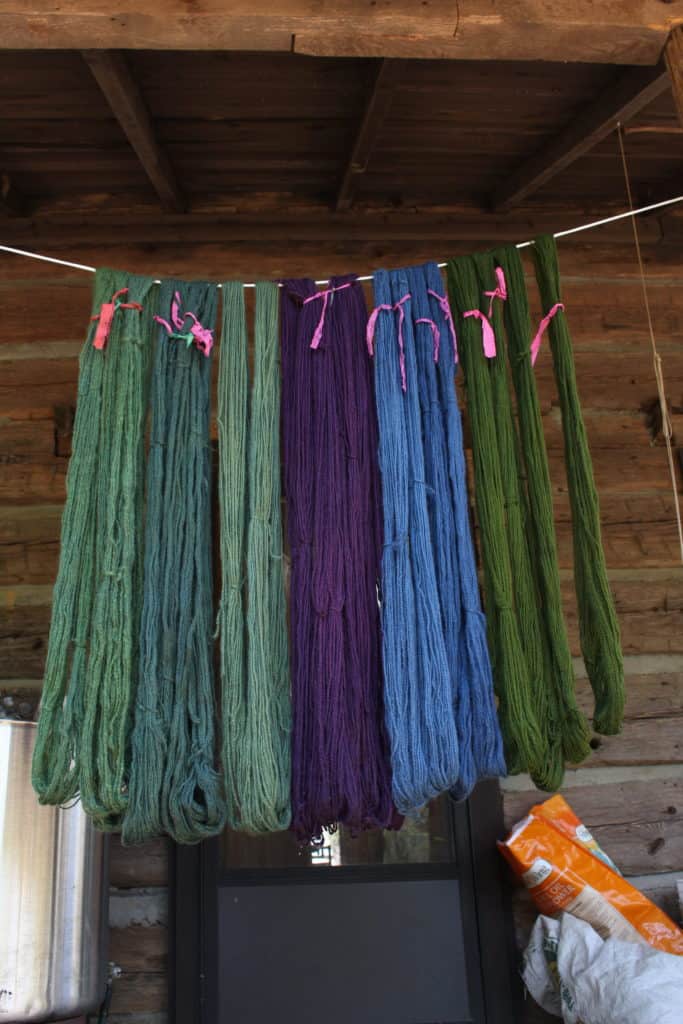Our first annual girl scout day was a success! Among the many demonstrators who came to share their craft with the girl scouts was our resident village weaver, Sharon Grist. Sharon did a special dye demonstration for the event that included pots of daffodils, dandelions, onion skins, and cochineal. Girl scouts and their families were able to help and learn about the process of natural dyeing and wild sources of color. Extracting dyes from natural sources is a simple, yet time-consuming process. First, the materials must be harvested. For flowers, the blooms must be picked before they wilt. For food materials, it can take longer to collect the right amount—Sharon saved her onion skins for a whole year for one dye pot! The only dye material purchased was cochineal, though it is still considered a natural dye. Unknown to most people, cochineal used to be widely used as a dye agent for both textiles and foodstuffs. Cochineal is an insect native to Central and South America that feeds on prickly pear cacti. The female insect contains the chemical dye agent that produces vibrant shades of red. Dried cochineal can be purchased at craft guilds or fiber shops.

A dye book is used to record dye quantities, times, and fibers that produce a certain color.
To prepare the dyes, they must be boiled in water and then the concentrated liquid must be strained to remove the materials (this keeps your yarn or fabric clean!). Once your dye liquid is ready, add mordanted yarn, wool, or cloth to the pot. Mordants help the fibers hold on to dyes. This step should be completed before dyeing. The dye liquids should be kept hot while the fibers are being dyed. Time left in the pot will depend on desired color and potency of the dye. More detailed information regarding this process can be found in books and online (we recommend Rita Buchanan’s A Dyer’s Garden and Jenny Dean’s Wild Color).

A dye pot full of daffodil blooms.
Sharon’s dye pots proved very successful and created a range of colors. The daffodils created a muted, buttery yellow while dandelions produced a very vibrant, sharp canary yellow. Onion skins resulted in a warm, pumpkin-y shade. The cochineal dye was used for three different batches of yarn and each batch resulted in a different shade of ruby pink.

From left to right: carrot tops, dandelions, daffodils, onion skins, cochineal, cochineal exhaust 1, cochineal exhaust 2

Overdyeing with indigo produces an even wider variety of colors
Some of these skeins were overdyed with indigo, creating hues of greens, teals, blues, and purples. Dye pots never fail in amazing us with their rich and complex colors! Yet despite their differences, natural dyes never clash and are all harmonious with one another, united by a shared, earthy undertone. To see more natural dyes, visit Sharon’s studio at Foxfire or come see us at the Mother Earth News Fair in Asheville, April 28-29!
See how indigo changes in this short video we shot today!
~Kami Ahrens, Assistant Curator and Educational Outreach Coordinator